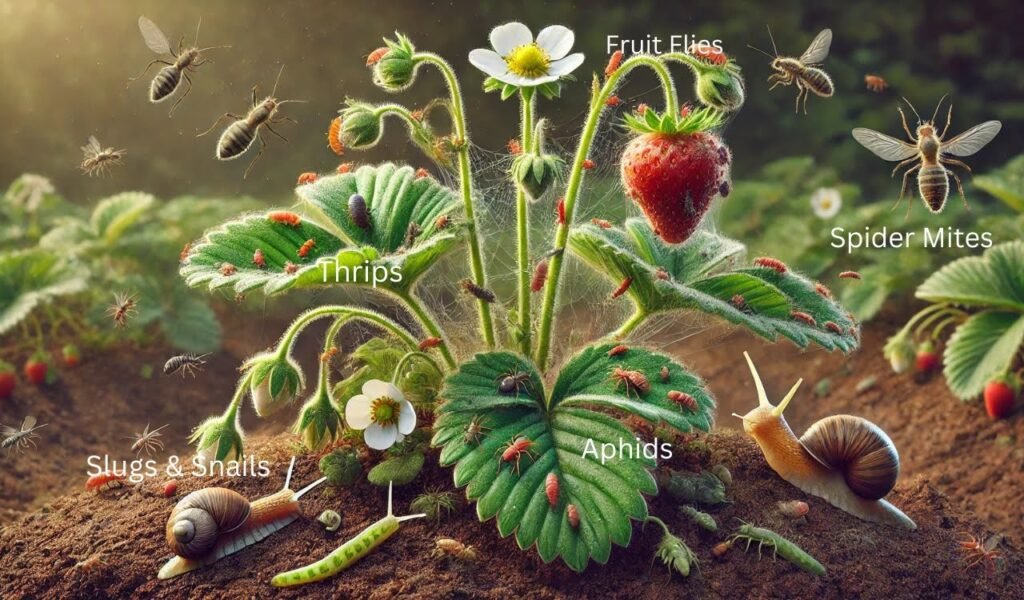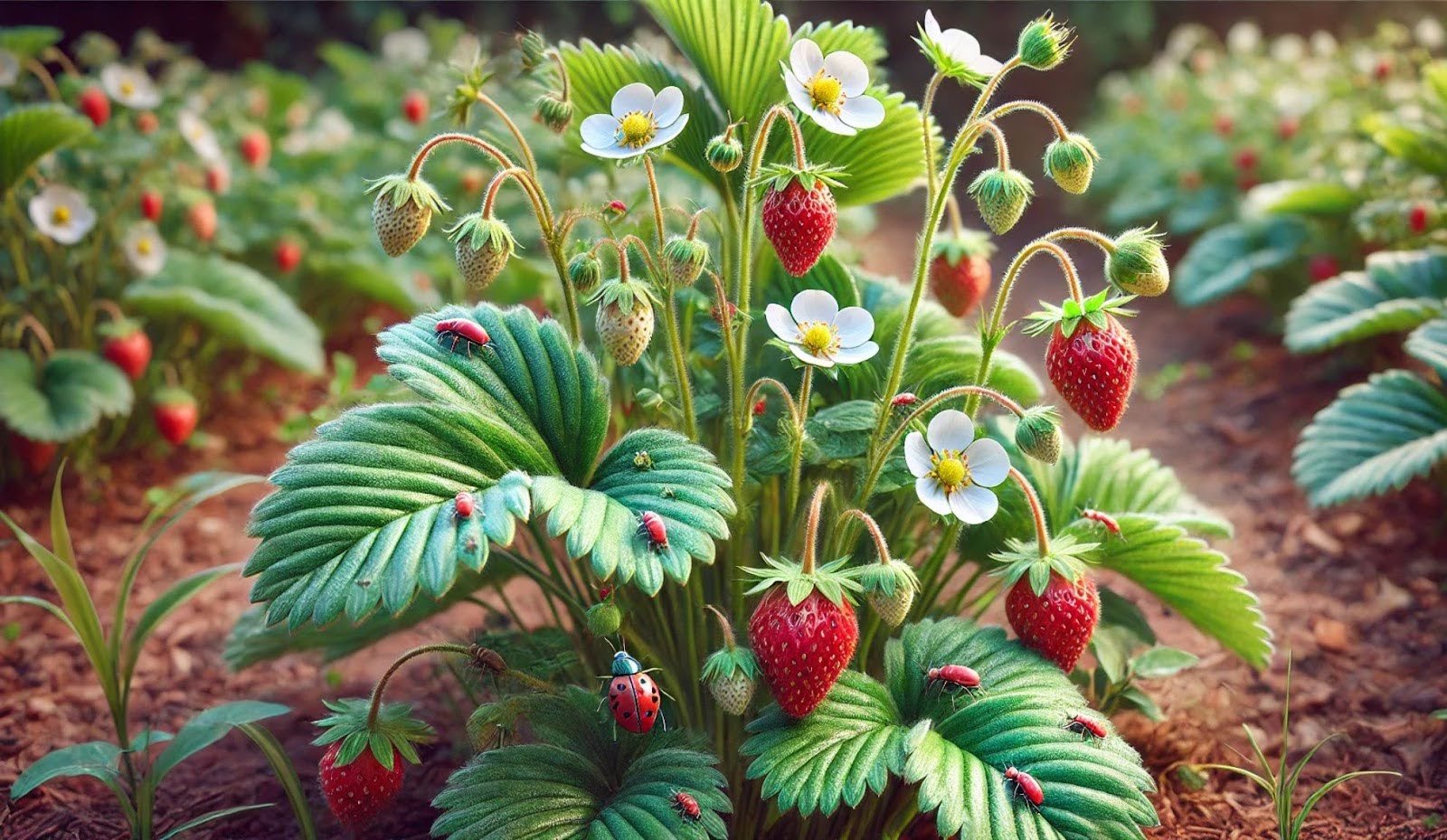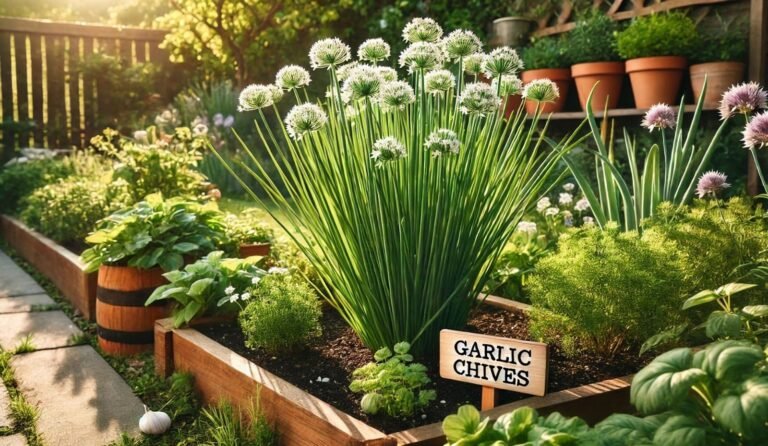Bugs on Strawberry Plants: Preventing Infestations in Your Garden
Bugs on strawberry plants can be a real headache, turning your sweet garden dreams into a sour experience. From tiny aphids to sneaky slugs, these pests can wreck leaves, flowers, and fruits faster than you’d expect.
But don’t worry—most of them can be tackled with simple, effective strategies. Want to know what’s bugging your strawberries and how to stop them? This guide has everything you need to protect your plants and keep them thriving. Let’s get started!
Common Bugs on Strawberry Plants

Strawberry plants are susceptible to a variety of pests, each capable of causing significant damage if left unmanaged. Let’s explore these pests in detail and how to control them.
1. Aphids
Aphids are one of the most common pests in gardens. These tiny, pear-shaped insects gather in clusters on the undersides of strawberry leaves, feeding on plant sap. Over time, this weakens the plant, causing stunted growth and curled, yellowing leaves.
Why They’re a Problem: Aphids secrete a sticky substance called honeydew, which attracts ants and can lead to the growth of sooty mold.
How to Spot Them: Look for curled leaves, sticky residue, and small green, black, or white insects clustered together.
Control Methods:
- Natural Predators: Introduce ladybugs and lacewings to your garden, as they feed on aphids.
- DIY Spray: Mix water with a few drops of dish soap and spray directly on aphids. Repeat every few days.
- Neem Oil: This organic oil is highly effective against aphids.
2. Spider Mites
Spider mites are microscopic pests that often go unnoticed until significant damage is done. They feed on the undersides of leaves, sucking out nutrients and causing discoloration.
Why They’re a Problem: Spider mites can quickly reproduce, especially in hot, dry conditions, leading to widespread infestations.
How to Spot Them: Look for fine webbing on the plant, speckled yellow leaves, and tiny moving dots under leaves.
Control Methods:
- Increase humidity around your plants by misting them regularly.
- Use a strong stream of water to dislodge mites.
- Apply insecticidal soap or horticultural oil for severe infestations.
3. Slugs and Snails
Slugs and snails are common culprits of chewed leaves and fruits, especially in moist environments.
Why They’re a Problem: These pests feed at night, leaving behind large holes in leaves and fruits, as well as slimy trails on plants and soil.
Control Methods:
- Hand-Picking: Inspect your plants in the early morning or evening and remove slugs and snails.
- Barriers: Spread diatomaceous earth or crushed eggshells around plants to deter them.
- Traps: Bury shallow dishes filled with beer to attract and trap slugs.
4. Thrips and Fruit Flies
Thrips are tiny insects that feed on the flowers of strawberry plants, causing deformed fruits. Fruit flies, on the other hand, target ripened or overripe strawberries.
Why They’re a Problem: Both pests reduce fruit quality and yield, making them a significant issue for gardeners.
Control Methods:
- Remove damaged fruits and flowers immediately.
- Use blue or yellow sticky traps to catch thrips.
- Encourage natural predators like predatory mites.
5. Other Pests to Watch For
Ants: While not directly harmful to strawberries, ants farm aphids for their honeydew and can spread infestations.
Beetles: Certain beetles chew through leaves, flowers, and fruits.
Caterpillars: These larvae can eat significant portions of foliage and fruit if left unchecked.
6. Preventive Pest Control Strategies
Maintain Plant Health: Strong, healthy plants are more resistant to pests.
Crop Rotation: Avoid planting strawberries in the same spot each year to prevent pest buildup in the soil.
Companion Planting: Grow pest-repelling plants like marigolds, chives, or garlic near your strawberries.
Can Strawberry Plants Be Over Pollinated?

Pollination is a critical aspect of fruit production in strawberries, but is it possible for strawberry plants to receive too much pollination? Let’s dive deeper.
How Pollination Works in Strawberries
Strawberries are pollinated by a combination of self-pollination, wind, and insects like bees and butterflies. Each strawberry flower contains both male and female parts, allowing it to pollinate itself. However, pollinators like bees enhance the process by ensuring every part of the flower is pollinated, leading to larger, better-formed fruits.
Can Over-Pollination Occur?
In strawberries, over-pollination is not a concern. In fact, increased pollination generally leads to better fruit quality. Problems often attributed to “over-pollination” are usually caused by environmental stressors such as:
- Excessive heat or drought.
- Overcrowding of plants, which limits airflow and attracts pests or diseases.
- Insufficient nutrients in the soil to support fruit development.
Ensuring Optimal Pollination
Attracting Pollinators: Plant flowers like lavender or wildflowers near your strawberries to draw bees and butterflies.
Encouraging Natural Pollination: Provide a water source for pollinators and avoid using pesticides that harm beneficial insects.
Manual Pollination: For indoor or container plants, use a small brush or cotton swab to gently transfer pollen between flowers.
Integrating Strawberry Plants into a Tomato Garden
Growing strawberries alongside tomatoes is a practical and rewarding choice for gardeners. These plants complement each other well when grown with care.
Benefits of Companion Planting
Efficient Use of Space: Tomatoes grow vertically, leaving ground space for strawberries to spread as a ground cover.
Pest Control: Tomatoes can repel certain pests like whiteflies, while strawberries’ ground-hugging foliage can protect soil moisture for tomato plants.
Improved Soil Health: Strawberries help reduce soil erosion around tomato plants.
Tips for Successful Integration
- Proper Spacing: Ensure that both plants have enough room to grow without competing for light or nutrients.
- Shared Pest Management: Be vigilant about pests that affect both plants, such as aphids or whiteflies.
- Separate Watering Needs: Tomatoes require consistent watering but prefer drier conditions than strawberries. Use drip irrigation to manage both effectively.
Preventive Measures and Best Practices for Healthy Strawberry Plants
The key to growing vibrant strawberry plants lies in preventive care and consistent maintenance.
1. Pest Prevention
Healthy Soil: Add compost or organic matter to improve nutrient content and drainage.
Watering Tips: Water plants early in the morning and avoid overhead watering to minimize fungal risks.
Companion Plants: Grow pest-repelling herbs like basil, mint, or thyme around your strawberries.
2. DIY Natural Remedies
Garlic Spray: Blend garlic with water and spray it around your plants to deter pests like aphids and spider mites.
Neem Oil: A versatile organic pesticide, neem oil effectively controls a range of pests.
Physical Barriers: Use bird netting or row covers to protect your strawberries from larger pests like birds or squirrels.
3. Regular Maintenance
Prune old or diseased leaves to improve airflow and reduce pest hiding spots. Fertilize your strawberries regularly with a balanced fertilizer to promote healthy fruit development. Remove weeds and debris to eliminate competition for nutrients.
4. Monitoring for Stress and Damage
Check your plants weekly for signs of pests, nutrient deficiencies, or diseases. Early intervention can prevent minor issues from escalating.
FAQ
How Often Should I Water Strawberry Plants?
Strawberries prefer consistent moisture but do not tolerate waterlogged soil. Water deeply 1-2 times a week, adjusting for rainfall or high heat.
Can Strawberries Be Grown Indoors?
Yes! Strawberries thrive indoors in containers with adequate sunlight (6-8 hours daily) and good drainage. Use self-pollinating varieties or hand-pollinate flowers.
What’s the Best Time to Plant Strawberries?
Strawberries are best planted in early spring or fall, depending on your climate. Choose a sunny location for outdoor planting.
What are the most common bugs on strawberry plants?
The most common bugs include aphids, spider mites, slugs, snails, thrips, and fruit flies. These pests can damage leaves, flowers, and fruits, reducing the overall yield and quality of your strawberry plants.
Do bugs ruin strawberries, or can I still eat them?
Bugs can damage strawberries, but if the fruit is only slightly affected, you can still eat it after thorough washing. Be cautious of strawberries with deep damage or visible mold, as these are best discarded.
How do I get rid of aphids on strawberry plants?
Aphids can be removed by spraying plants with water to dislodge them, applying insecticidal soap or neem oil, introducing natural predators like ladybugs to your garden.
Are slugs and snails attracted to strawberry plants?
Yes, slugs and snails love strawberries, especially during wet conditions. To deter them, use barriers like crushed eggshells or diatomaceous earth, and consider setting up beer traps to lure and trap them.
Can bugs cause strawberry plants to stop producing fruit?
Severe infestations can stress plants, leading to fewer flowers and reduced fruit production. Early detection and treatment of pests can prevent this issue.
Conclusion
Strawberries are an excellent choice for gardeners, offering delicious rewards with proper care. By understanding the pests that target strawberry plants and ensuring optimal pollination, you can maximize your yield and enjoy healthy plants throughout the growing season.
Whether you’re cultivating strawberries alone or integrating them into a tomato garden, following best practices like companion planting, pest prevention, and regular maintenance will set you up for success. Remember, a thriving garden starts with attention to detail and consistent care. Happy gardening, and may your strawberries be as sweet as your efforts!







